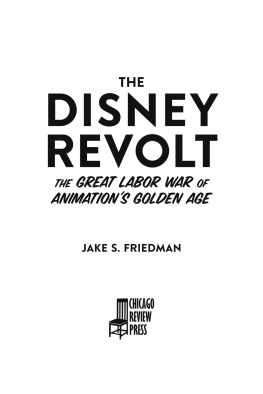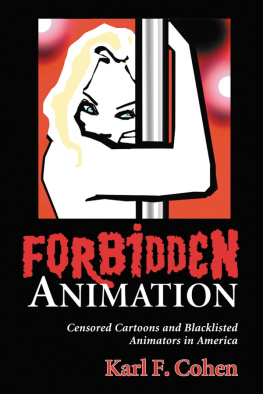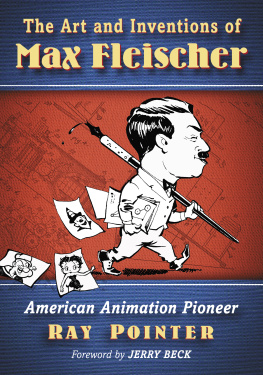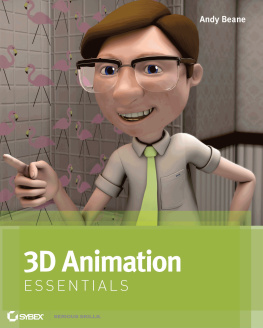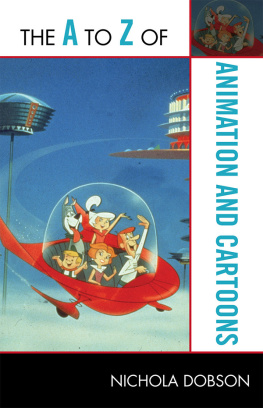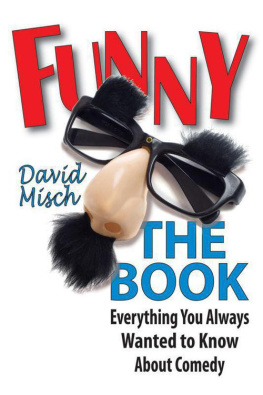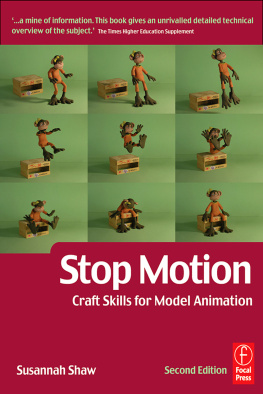Funny Pictures
The publisher gratefully acknowledges the generous support
of the Ahmanson Foundation Humanities Endowment Fund of
the University of California Press Foundation.
Funny Pictures
Animation and Comedy
in Studio-Era Hollywood

Edited by
Daniel Goldmark and Charlie Keil

University of California Press, one of the most distinguished university presses in the United States, enriches lives around the world by advancing scholarship in the humanities, social sciences, and natural sciences. Its activities are supported by the UC Press Foundation and by philanthropic contributions from individuals and institutions. For more information, visit www.ucpress.edu .
University of California Press
Berkeley and Los Angeles, California
University of California Press, Ltd.
London, England
2011 by The Regents of the University of California
Library of Congress Cataloging-in-Publication Data
Funny pictures : animation and comedy in studio-era Hollywood / edited by Daniel Goldmark and Charlie Keil.
p. cm.
Includes bibliographical references and index.
ISBN 978-0-520-26723-7 (cloth : acid-free paper)
ISBN 978-0-520-26724-4 (pbk. : acid-free paper)
1. Animated filmsUnited StatesHistory and criticism. 2. Wit and humor in motion pictures. I. Goldmark, Daniel. II. Keil, Charlie.
NC1766.U5F86 2011
791.43'340973dc22 2011005494
Manufactured in the United States of America
19 18 17 16 15 14 13 12 11
10 9 8 7 6 5 4 3 2 1
In keeping with a commitment to support environmentally responsible and sustainable printing practices, UC Press has printed this book on Cascades Enviro 100, a 100 percent postconsumer waste, recycled, de-inked fiber. FSC recycled certified and processed chlorine free. It is acid free, Ecologo certified, and manufactured by BioGas energy.
CONTENTS
FIGURES
10.1. Charley Bowerss Lifes
Little Phonies
Introduction
What Makes These Pictures So Funny?
Charlie Keil and Daniel Goldmark
In Preston Sturgess Sullivans Travels (1941) John Sullivan, a movie director traversing the United States in an attempt to define the soul of America, finds himself wrongly imprisoned and part of a chain gang. Invited with the other prisoners to attend a screening at an African American church in a southern bayou, Sully discovers what really speaks to the human condition when he notes the spontaneous and heartfelt peals of laughter generated by the film chosen to amuse black parishioner and white jailbird alike. The film in question? A Disney cartoon.
In asserting that Hollywood entertainment finds its purest expression in the cartoon hijinks of Pluto and Mickey, Sullivans Travels confirms what has become a strongly held assumption; namely, studio-era animation, in particular shorts, has been long associated with comedy. At least as far back as E. G. Lutzs book, Animated Cartoons: How They are Made, Their Origin and Development (1920), a volume that greatly inspired the young Walt Disney, comedy has loomed large in the success of cartoons, evidenced by an entire chapter, On Humorous Effects and on Plots, dedicated to the topic. Lutz even begins the chapter with the seemingly obvious statement: The purpose of the animated cartoon being to amuse, the experienced animator makes it his aim to get, as the saying goes in the trade, a laugh in every foot of film. But if equating the short cartoon with Hollywood humor now strikes us as axiomatic, much as it did Lutz in the early days of the studio era, we should resist accepting the logic of the association at face value, if only to explore how the animators pen came to be enlisted consistently as a primary tool for entertaining the masses through cartoon merriment.
Of course, studio-era animation need not be funny, nor was it so at all times. But insofar as the studio system assigned prescribed roles to the types of films produced under its control, and inasmuch as that systems primary goal was to entertainas the example of Sullivans Travels is at pains to demonstratecartoons chiefly carried out the task of making audiences laugh. Studio executives believed that cartoons were ideally suited to this mission; audiences reinforced that belief by responding to the studio-era cartoon with appreciative laughter; and animators complied by rolling out dozens upon dozens of mirth machines for the nearly five decades that the studio system held sway in the United States. So entrenched was this equation of cartoons and humor that the assumptions underlying it have gone largely unexamined. Why were cartoons assigned this role? Why did cartoon makers, studio executives, and audiences all subscribe to the idea that animation would be most effective if enlisted to engender laughter? If we try to determine how this connection was made and sustained so effectively, do we find its roots in the nature and lineage of animation, the structure and logic of the studio system, or some combination?
Surprisingly, these questions have gone unanswered for the most part. In analyzing the long-standing association of comedy and cartoons forged during the years of the studio system, this volume ultimately points to an unavoidable by-product of that association: our ideas about (American) animation have been shaped by the commercial success and social impact of the Hollywood cartoon. Whether by design or by fiat, the role of the animated short became prescribed to the point where few other competing functions could be entertained or imagined. This predominance of funny pictures, both within the production system and the public consciousness, demands a thoroughgoing exploration of the process by which the broader-based term animation became synonymous with the label cartoon. The aim of Funny Pictures, then, is not to drain the humor out of studio-era animation by explaining it away but rather to elaborate on the ramifications of comedy finding itself so fully ingrained within the form of the Hollywood cartoon for so long.
Acknowledgment of the complex nature of the relationship between humor and animation guides the organization of this anthology, prompting balanced consideration of both the historical dimensions and theoretical implications of their union. Adhering to an arrangement that accounts for both the development of animations role during the fifty-year sweep of the studio era and the relevance of numerous conceptual framesof representation, narratology, and authorshipto our understanding of animations social impact and formal functions, Funny Pictures also maintains a clear eye on the influence of the studio system during this period. Any simple assertions that we might be tempted to put forth concerning animation, comedy, the studio era, or any combination of the three, find themselves complicated by the range of arguments and insights advanced by the chapters to follow. Even so, a roadmap seems in order, an overview that sorts out the conflicting messagesof conformity and anarchy, of repetition and deviation, of racism and iconoclasm, of control and resistancethat emerge from any collection as diverse as this one on a topic so rife with its own internal contradictions. So, while the cartoons under examination may simply seem to be playing for laughs, we must forestall for the moment the reactions of the patrons in that swamp-bound church. For
Next page

